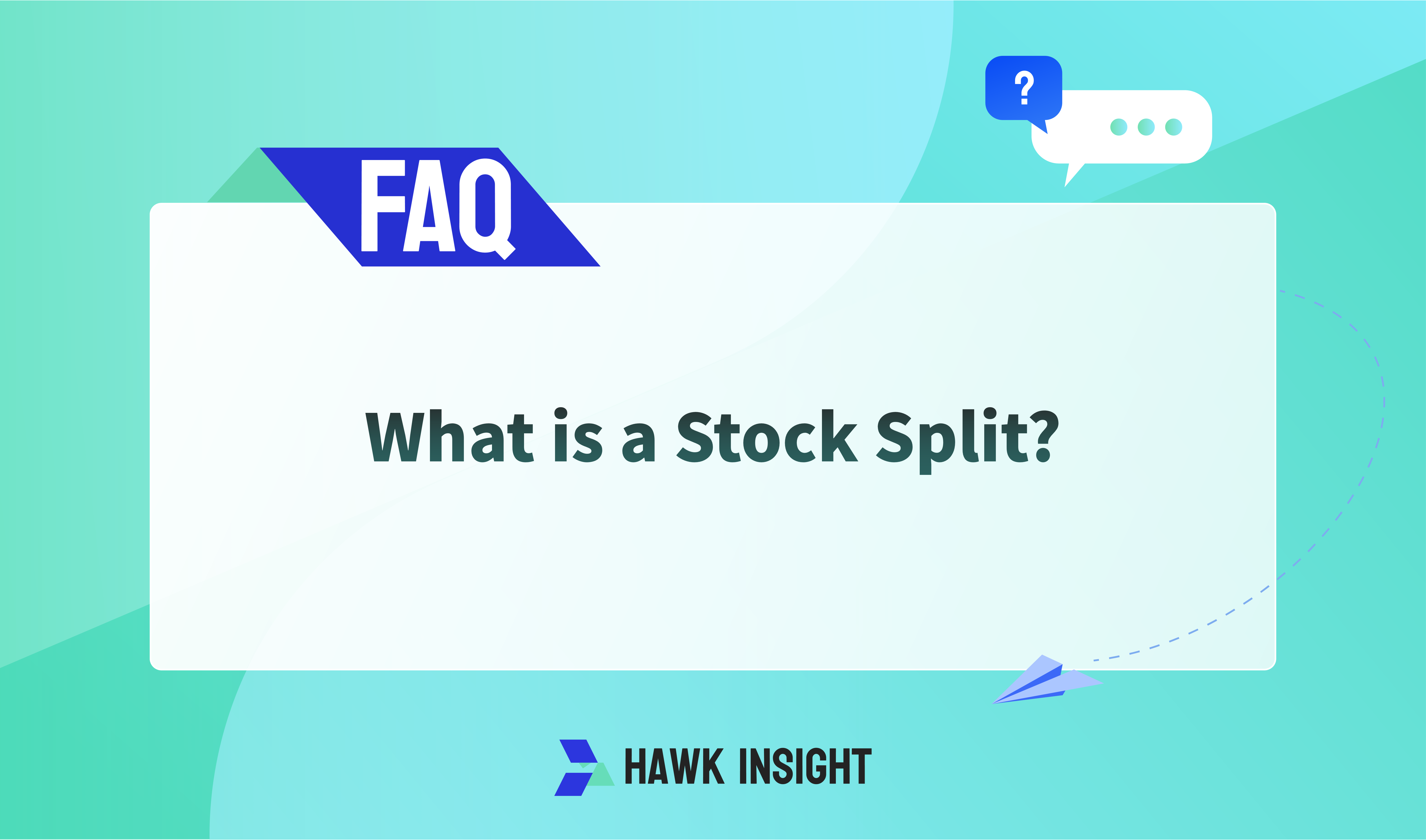What is a Stock Split?
The purpose of a stock split (and reverse stock split) is to make the stock's market price more (or less) affordable by changing the number of shares available - without affecting the initial overall value of the company at the time of the split.

A stock split refers to a company's action of dividing existing shares into a larger number of smaller shares to reduce the price per share while keeping the company's overall market value unchanged. In contrast, a reverse stock split combines multiple shares into one to increase the price per share. Both processes are often related to investor psychology, aiming to enhance liquidity and facilitate trading by adjusting the number of shares.
Mechanism of Operation
In a stock split, the company's board may decide that the share price is too high, opting for a split such as "2-for-1." Thus, investors holding one share receive two lower-priced shares. For example, Apple Inc. (AAPL) has executed multiple splits since its IPO in 1980, the most recent being a 4-for-1 split in August 2020. If an investor held one share in 1980, by 2020 they would have 56 shares.
What is a Reverse Stock Split?
A reverse stock split refers to a company merging its existing shares into fewer shares to raise the price per share. This process can be visualized as combining two small pieces of clay into one larger ball; the total amount of clay remains unchanged. In a reverse split, the company aims to improve its market image by raising the share price and mitigating the negative impacts of a low stock price.
Reasons for Reverse Stock Splits
The primary motivations for a reverse stock split include:
- Low Share Price: A company may perceive its stock as too cheap compared to peers, which could affect investor perception of its potential value.
- Delisting Risk: Some exchanges, like the New York Stock Exchange, require a minimum share price of $1. Falling below this threshold may result in delisting.
The market capitalization of a public company is calculated based on the product of the share price and the number of outstanding shares; thus, the market cap remains unchanged during both stock splits and reverse stock splits.
Case Study: Blue Apron
For instance, Blue Apron (APRN) executed a 1-for-15 reverse stock split in June 2019. At that time, its share price had fallen below $1, approximately $0.55, prompting a delisting warning from the NYSE. The board swiftly approved the reverse split to raise the stock price and protect the company’s market position.
Differences Between Reverse Stock Split and Stock Split
-
Purpose:
- Stock Split: Aims to lower the price per share to make it more attractive to investors.
- Reverse Stock Split: Aims to increase the price per share to avoid delisting or improve market image.
-
Mechanism:
- Stock Split: Existing shares are split into a greater number of shares, e.g., "2-for-1" results in twice the number of shares at half the price.
- Reverse Stock Split: Existing shares are combined into fewer shares, e.g., "1-for-5" results in one share at five times the price.
-
Impact:
- Stock Split: Total value held by shareholders remains unchanged, but the number of shares increases and price decreases.
- Reverse Stock Split: Total value remains unchanged, but the number of shares decreases and price increases.
-
Market Reaction:
- Stock Split: Often seen as a positive sign of company performance, potentially attracting more investors.
- Reverse Stock Split: Often viewed as a warning sign of company distress, raising concerns about future prospects.
Board Decisions and Approval Process
Both stock splits and reverse stock splits require approval from the board of directors, typically composed of 8 to 12 members representing shareholder interests. The board assesses the potential impacts of the split on the company and shareholders. Once approved, the board announces the split ratio and implementation date.
Investor Impact of Reverse Stock Splits
Despite the formal change in the number of shares and their prices, reverse stock splits do not impact the overall value for investors. This strategy is more of a psychological maneuver aimed at enhancing market perception of the company. However, reverse stock splits are often seen as red flags regarding the company's health, and stock prices may continue to decline post-split.
In summary, a reverse stock split is a strategy employed by companies under market pressure to improve their image and avoid delisting risks. Although the overall impact on existing shareholders is limited, market reactions to such actions can be complex, and investors should closely monitor the company's fundamentals and future outlook.
·Original
Disclaimer: The views in this article are from the original Creator and do not represent the views or position of Hawk Insight. The content of the article is for reference, communication and learning only, and does not constitute investment advice. If it involves copyright issues, please contact us for deletion.